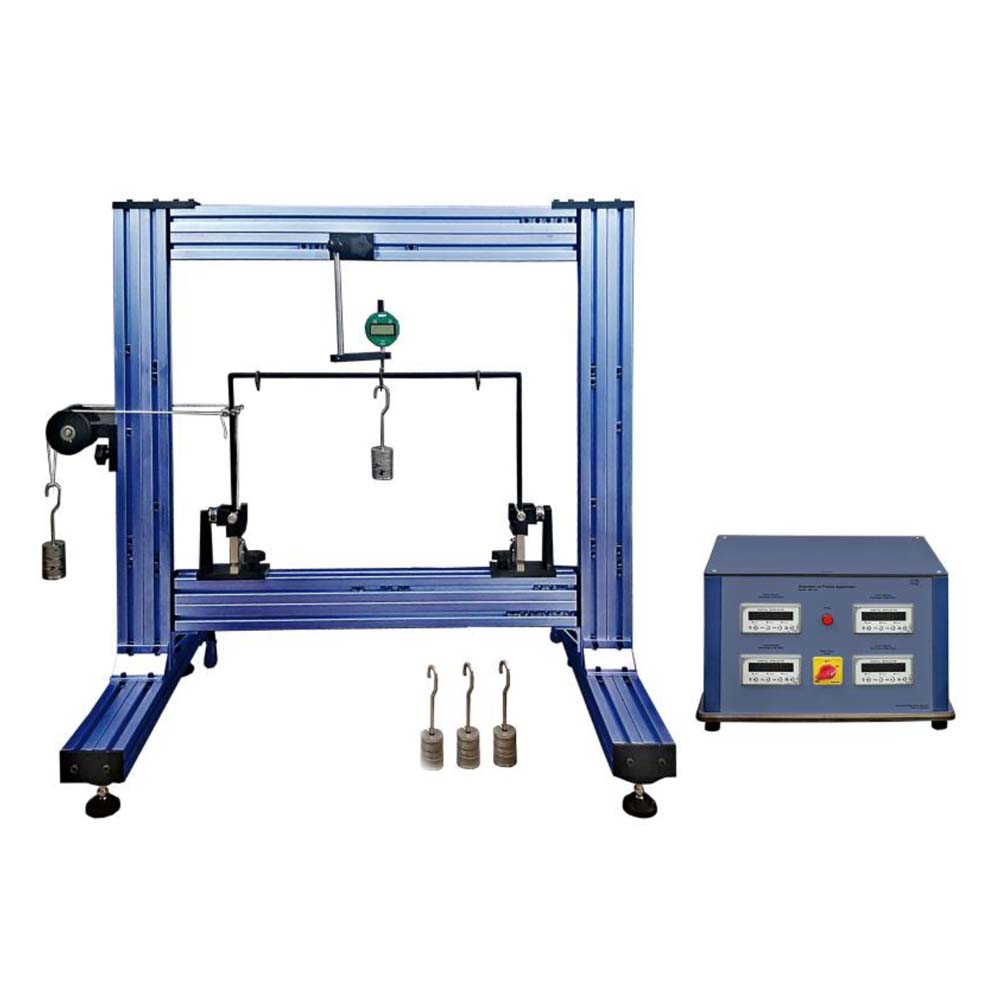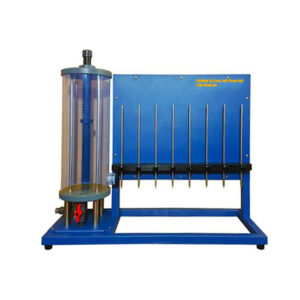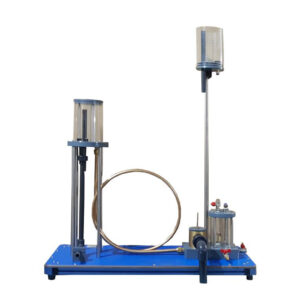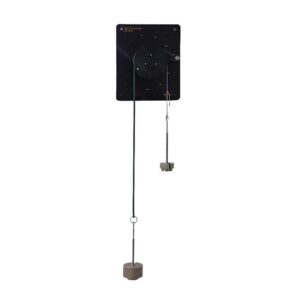Hardware for the experiment attaches to a Frame. Two rectangular portal frames with the same dimensions are included with the hardware. However, one of the frames has a constant second moment of area, while the other has one leg with a smaller second moment of area. Students secure each leg of one of the portal frames with clamps to the test frame’s supports. They then use masses on a hanger to load the top of the portal structure. A Digital Force Display is connected to load cells on the supports. These gauge the response forces that the portal frame experiences going up and down. Sway is measured by a digital deflection indicator at the top of the portal frame. Students plot bending moment diagrams using the results of moments and reactions. They compare theoretical calculations with bending moment diagrams, sway direction (and its causes), and sway. The experiment is then carried out once more utilising the second portal frame. The manual discusses how to operate the equipment, provides experiment protocols, and provides information on the equipment, including sample experiment results. The company can provide the supplemental Software, for use on a compatible computer, for additional “virtual” tests. The virtual experiments serve as a simulation of the hardware testing that can be run. Additionally, they increase the variety of tests available beyond what is possible with just the hardware, such as larger loads, uniform loads, or different test specimens. This extends the student’s learning experience. The organisation can provide an optional Automatic Data Acquisition system for the automatic data collection of your experiment findings. included with the software that provides further virtual experiments, shows and logs the results ofyour trials (optional).
Experiments
- Determination of frame vertical reaction forces upon loading.
- Determination of frame horizontal reaction forces upon loading.
- Relationship between load application and deformation on the frame.
- Differences between statically determinate and Statically indeterminate frame.
- Familiarisation with the first-order elasticity theory for statically determinate and Indeterminate systems.
- Application of the principle of superposition.
- Application of the principle of virtual work on statically determinate and statically Indeterminate frames determination of a deformation by the principle of virtual forces.
- Determination of a load by the principle of virtual displacement.
- Comparison of calculated and measured Deformations.
Specifications
Portal frames:
- Two, of aluminium alloy, nominally 250 mm x 500 mm, one with a uniform section, one with a non-uniform section
- Width of frame: 25mm
- Breadth of uniform frame: 6mm
- Breadth of non-uniform frame: 4mm (on one side)
- Load application: 0.5N x5 (hanger), 10g x150




